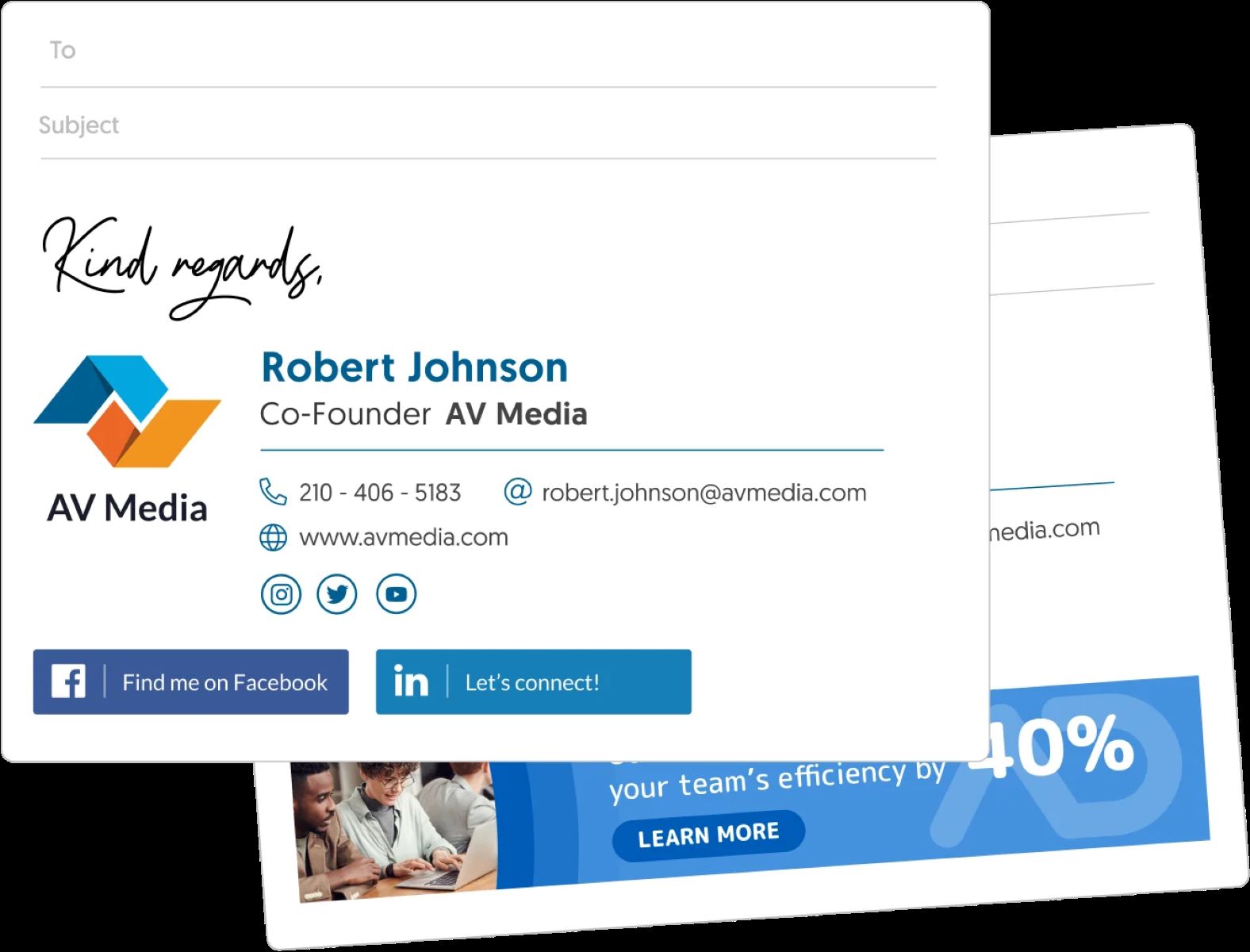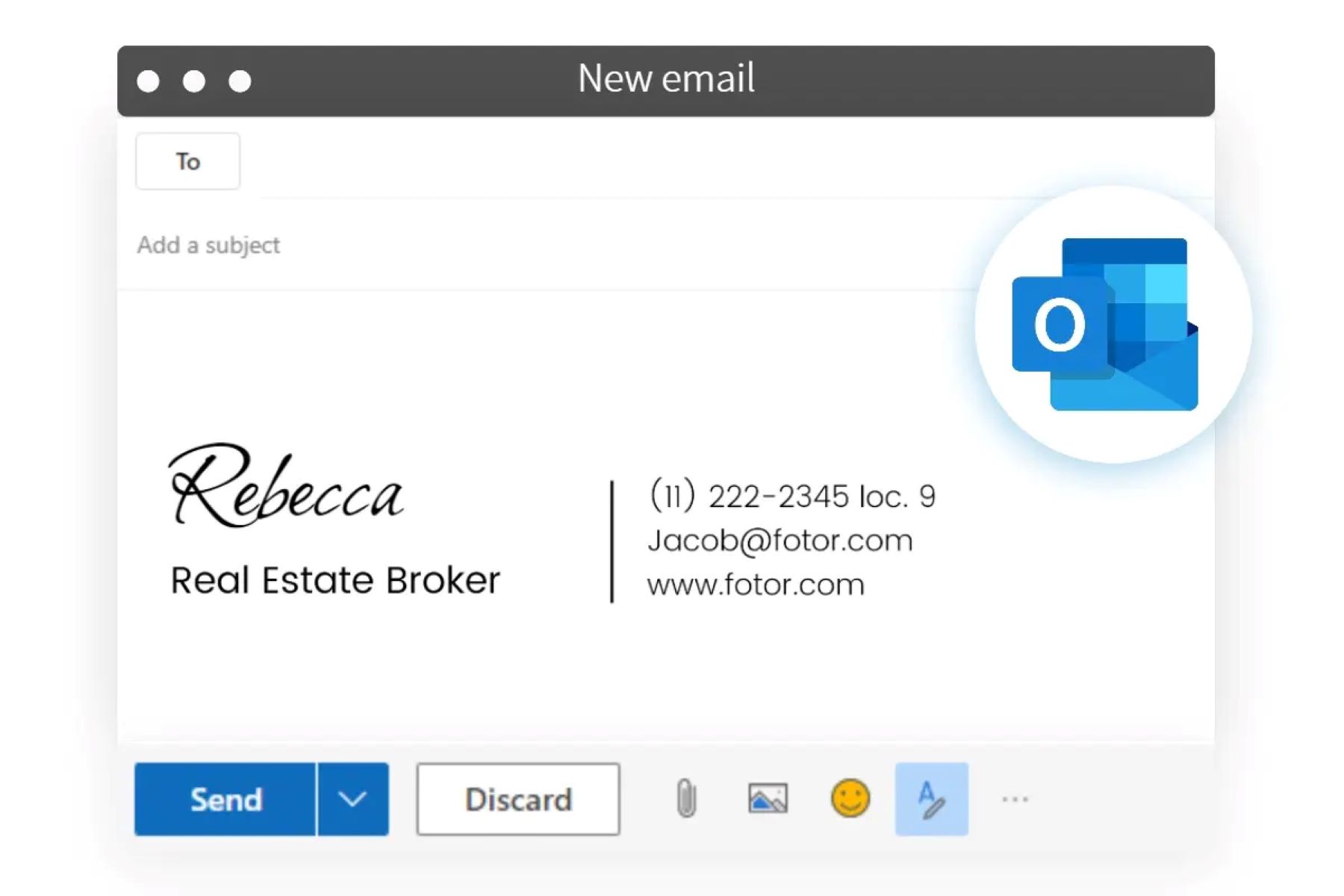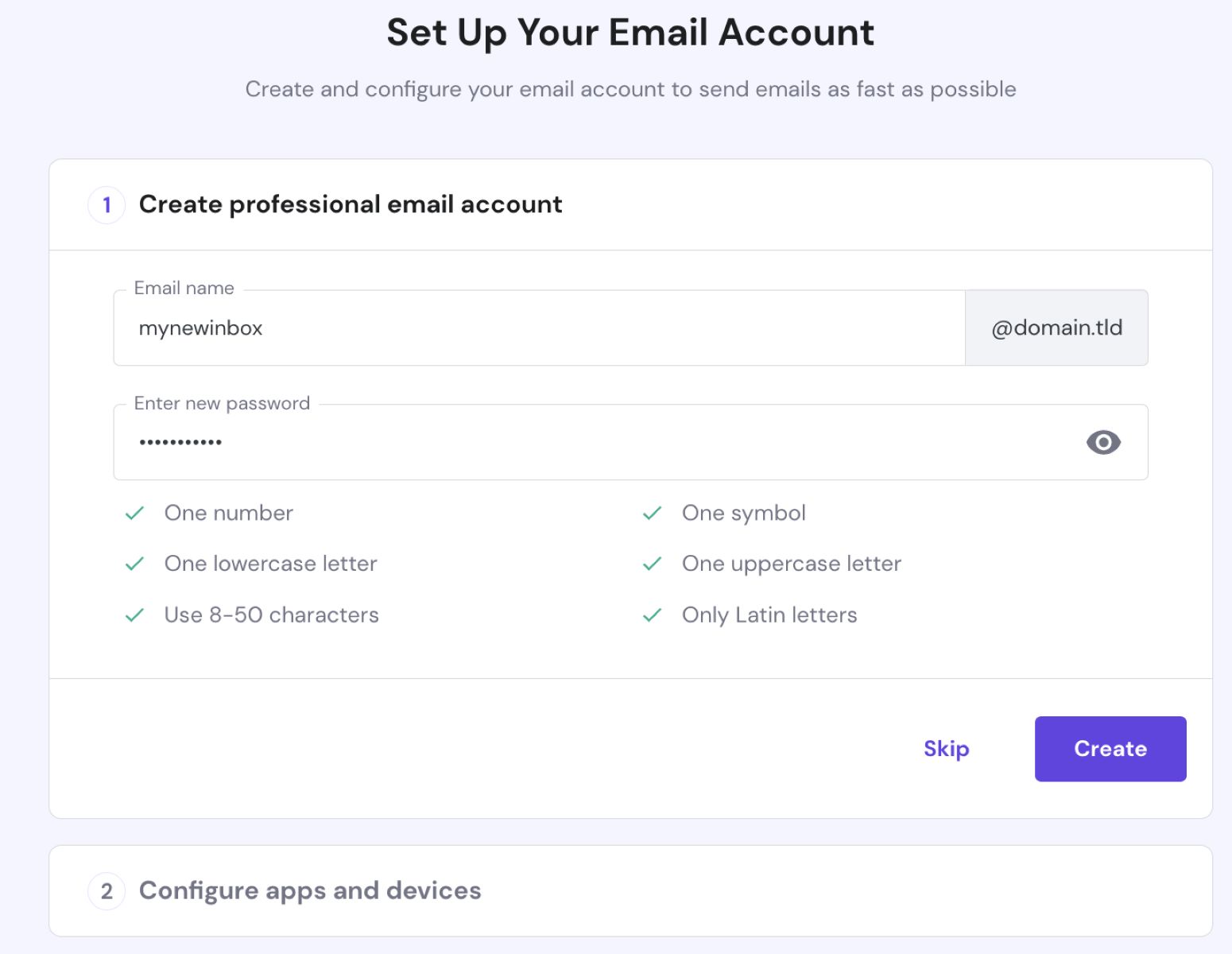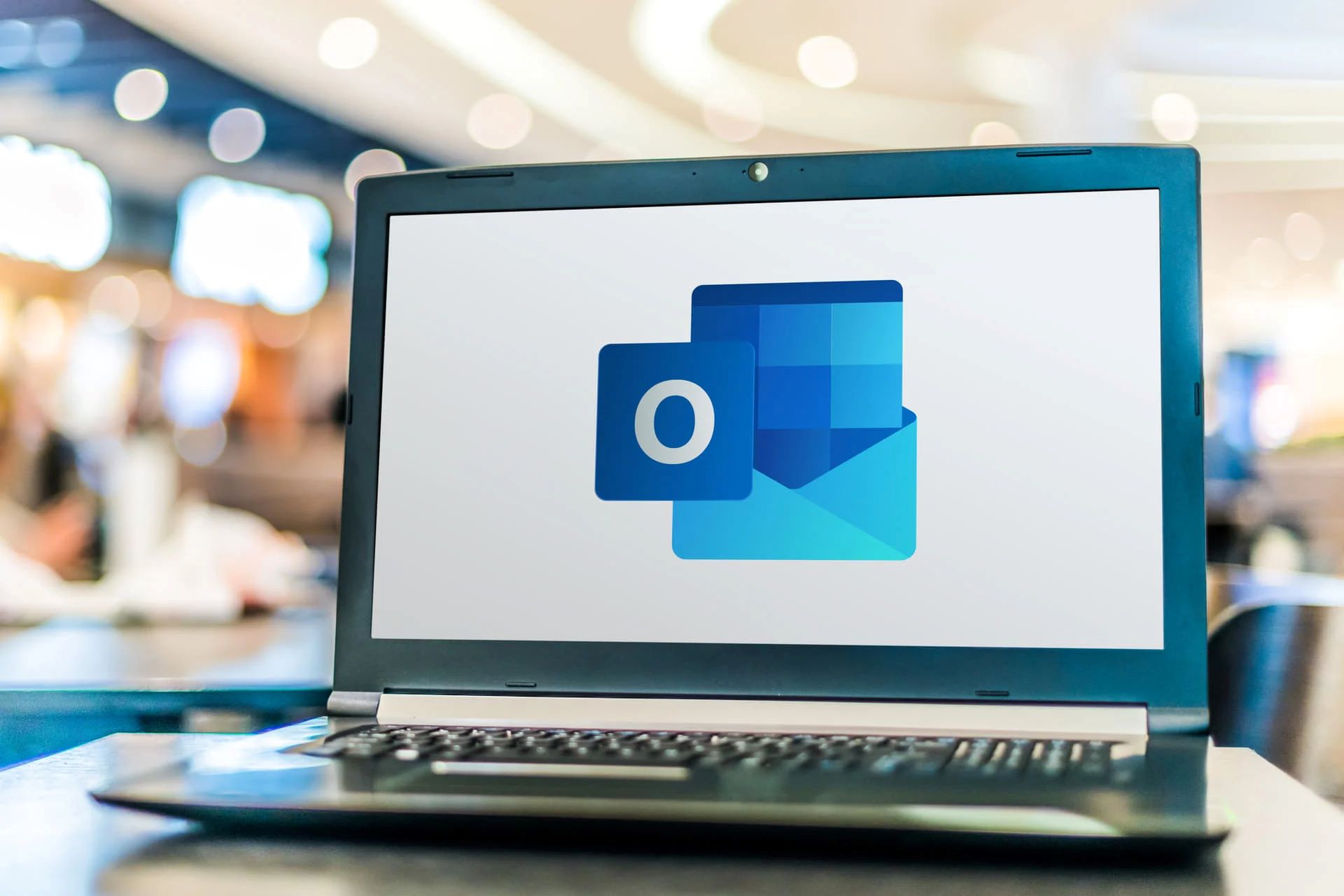Introduction
An email signature is not just a formality; it’s a powerful tool that can leave a lasting impression on recipients. It’s an opportunity to showcase your professionalism, provide essential contact information, and even drive engagement or promote your brand. A well-crafted email signature can make you stand out among the sea of messages flooding inboxes daily.
When composing your email signature, it is crucial to include the right elements that will not only make it visually appealing but also provide recipients with the necessary information to get in touch with you. In this article, we will dive into the key components to consider when creating an effective email signature.
Before we delve into the specifics, bear in mind that simplicity is key. Your email signature should be concise, clutter-free, and easy to read. It should not overwhelm your recipients with excessive details or distract them from the primary content of your email. With that said, let’s explore the essential elements that should be included in your email signature.
Contact Information
One of the primary purposes of an email signature is to provide recipients with multiple ways to contact you. Make sure you include the following essential contact information:
- Name: Include your full name or the name by which you prefer to be addressed.
- Title or Position: Specify your professional title or position within your organization.
- Company Name: Mention the name of the company or organization you represent.
- Phone Number: Provide a phone number where recipients can reach you. Consider including a direct line if applicable.
- Email Address: Display your email address prominently to make it easy for recipients to respond.
- Website: Include a link to your website, which can drive traffic and provide additional information about you or your business.
By incorporating these contact details into your email signature, you offer recipients various methods to engage with you, ensuring that they can easily connect with you using their preferred mode of communication.
Name
Your name is the most crucial element of your email signature as it identifies you and helps recipients remember who you are. When including your name in your email signature, consider the following tips:
- Full Name: Use your full name to ensure clarity and professionalism. Including your first name, middle initial, and last name is ideal, especially in formal or business-related communications.
- Preferred Name: If you have a preferred name or commonly go by a nickname, you can choose to use that instead. Just ensure that it is still recognizable and professional.
- Pronunciation Assistance: If your name is unique or challenging to pronounce, you may consider including phonetic spelling or a pronunciation guide to assist recipients.
- Credentials or Degrees: Depending on your profession or line of work, you might want to include relevant credentials or academic degrees after your name. This can add credibility and establish your expertise.
Remember to keep the formatting of your name consistent across all platforms and ensure that it is legible and easy to read. A clear and recognizable name in your email signature helps establish a professional and memorable presence.
Title or Position
Your title or position within your organization is an important piece of information to include in your email signature. It provides recipients with additional context about your role and responsibilities. Here are some considerations when including your title or position:
- Accuracy: Ensure that the title or position you provide accurately reflects your current role within the company. Avoid using vague terms or generic job titles that may not convey your specific responsibilities.
- Relevance: If you hold multiple positions or have various roles within your organization, consider including the most relevant or prominent one in your email signature. This helps recipients understand your primary area of expertise or responsibility.
- Consistency: If you have a set format or standard within your organization for displaying titles or positions, make sure to follow it. Consistency in email signatures across your team can help create a cohesive and professional brand image.
By including your title or position in your email signature, you establish your professional identity and provide recipients with valuable information about your role within the organization. This can help build trust and credibility, especially in business or professional communication.
Company Name
Including the name of your company in your email signature is important as it helps recipients identify the organization you represent. Here are some factors to consider when displaying the company name:
- Full Name: Include the full and official name of the company. This ensures clarity and avoids any confusion with similarly named organizations.
- Logo: If your company has a logo, consider incorporating it in your email signature. This visual element can enhance brand recognition and professionalism.
- Font and Formatting: Use a consistent font and formatting style for the company name. Ensure that it is easily readable and visually aligned with your brand identity.
- Hyperlink: Linking your company name to the official website can be beneficial. It allows recipients to quickly access more information about the company if they are interested.
By including the company name in your email signature, you provide recipients with important context about the organization you represent. This can help establish credibility and trust, especially in formal or business communications.
Phone Number
Providing your phone number in your email signature allows recipients to reach out to you directly. Here are some considerations when including your phone number:
- Formatting: Format your phone number in a way that is familiar and easy to read for your target audience. Use parentheses around the area code, dashes between groups of numbers, and a consistent format across all platforms.
- Direct Line: If applicable, consider including a direct line to reach you. This can be especially useful if you have different phone numbers for different purposes or if you want to streamline communication.
- International Dialing: If you frequently communicate with individuals from different countries, consider including the international dialing code along with your phone number. This can help recipients dial your number correctly.
- Availability: If you have specific availability hours or if there are times when you prefer not to be contacted, you can mention these details alongside your phone number. This helps manage expectations and ensures more efficient communication.
By including your phone number in your email signature, you give recipients an alternative method to get in touch with you that may be more convenient or suitable for their needs. It shows accessibility and provides a direct line of communication, helping to build relationships and facilitate effective collaboration.
Email Address
Your email address is a crucial element to include in your email signature, as it allows recipients to respond directly to your message. Here are some important factors to consider when displaying your email address:
- Clarity: Ensure that your email address is clear and easy to read. Use a font size and style that is legible, and avoid using complicated or obscure email addresses.
- Professional Domain: If possible, use an email address with a professional domain that corresponds to your organization or personal brand. This adds a level of credibility and establishes professionalism.
- Privacy Considerations: If you are concerned about privacy or receiving unsolicited emails, you can consider using a professional email address that is separate from your personal one.
- Hyperlink: Make your email address clickable by hyperlinking it. This allows recipients to easily compose an email by clicking on your address, saving time and effort.
By including your email address in your email signature, you make it convenient for recipients to contact you directly. It demonstrates your willingness to engage in conversation and facilitates efficient communication.
Website
Including a link to your website in your email signature is a great way to provide recipients with additional information and promote your online presence. Here are some important considerations regarding your website:
- URL: Display the full URL of your website, including the appropriate protocol (http:// or https://). This ensures that recipients can easily access your website by clicking on the link.
- Anchor Text: Instead of displaying the full URL, you can use descriptive anchor text for your website link. For example, you can use phrases like “Visit My Website” or “Learn More About Our Services” to make the link more enticing.
- Positioning: Decide where in your email signature you want to place the website link. Consider placing it near your name or company name for better visibility.
- Open in New Tab: Set the website link to open in a new tab when clicked. This ensures that recipients don’t lose the context of your email and can easily return to it after exploring your website.
- Showcasing: If you have specific sections or pages on your website that are relevant to the email recipient, you can consider linking directly to those pages instead of the homepage. This shows personalized attention and directs recipients to the most relevant content.
By including a link to your website in your email signature, you create opportunities for recipients to learn more about you, your expertise, and your organization. It serves as a means to establish credibility and showcase your online presence.
Social Media Links
In today’s digital age, incorporating social media links in your email signature can help expand your online presence and facilitate engagement with your audience. Here are some important factors to consider when including social media links:
- Selecting Platforms: Choose the social media platforms that are most relevant to you or your business. Consider the ones where you are most active and have a significant following.
- Icon Placement: Use recognizable social media icons to represent each platform. Place these icons in your email signature, preferably aligned horizontally or vertically, for a clean and organized appearance.
- Hyperlinking: Ensure that the social media icons are hyperlinked to your respective profiles. This allows recipients to easily navigate to your social media pages with a simple click.
- Prioritizing: If you are active on multiple social media platforms, prioritize the ones that are most relevant to your professional goals or business objectives. For instance, if you primarily engage with clients on LinkedIn, display its icon prominently.
- Consistency: Maintain consistency by using the same social media icons and formatting across your email signature and other marketing materials. This reinforces your branding and creates a cohesive visual experience.
By including social media links in your email signature, you encourage recipients to connect with you on various platforms. This allows them to stay updated with your latest updates, articles, promotions, and industry insights, fostering deeper engagement and expanding your network.
Professional Headshot or Logo
Incorporating a professional headshot or logo in your email signature can significantly enhance your personal branding and make a lasting impression on recipients. Here are some important considerations when including a headshot or logo:
- Headshot: If you choose to include a professional headshot, ensure that it is high-quality, well-lit, and represents you in a professional manner. Use a recent photo that accurately reflects your current appearance.
- Logo: If you prefer to use a logo instead, make sure it is clear, visually appealing, and relevant to your personal brand or business. The logo should be easily recognizable and in line with your overall branding strategy.
- Size and Placement: Place your headshot or logo in a prominent but non-obtrusive position in your email signature. Avoid making it too large or overwhelming, as it may distract from the other essential information.
- Consistency: Ensure that your headshot or logo is consistent across all your professional platforms, including social media profiles, websites, and other marketing materials. This consistency reinforces your branding and helps establish a recognizable visual identity.
- Professionalism: Regardless of whether you choose a headshot or a logo, remember to keep the overall look professional and aligned with your industry or business. Avoid using casual or overly informal images that may not convey the desired level of professionalism.
By including a professional headshot or logo in your email signature, you add a personal touch to your communications. It humanizes your interactions and creates a sense of trust and familiarity, helping to strengthen your professional relationships and leave a memorable impression on recipients.
Relevant Call-to-Action
Adding a relevant call-to-action (CTA) to your email signature can encourage recipients to take a specific action or engage further with you or your business. Here are some important considerations when including a CTA:
- Clear and Concise: Make your CTA straightforward and easy to understand. Use action-oriented language that prompts recipients to take a specific next step.
- Relevance: Ensure that your CTA aligns with your goals and objectives. Consider the purpose of your email and the desired outcome to determine an appropriate CTA.
- Examples: Some common CTAs to include in your email signature include “Schedule a Meeting,” “Download Our eBook,” “Follow Us on Social Media,” or “Request a Quote.” Customize your CTA based on your specific needs and target audience.
- Link or Button: Depending on your email signature’s design and capabilities, you can add a linked text CTA or even a button that stands out and facilitates direct action.
- Testing and Optimization: Don’t be afraid to test different CTAs to see which ones resonate best with your recipients. Monitor the performance and optimize your CTA accordingly to improve conversion rates.
By including a relevant CTA in your email signature, you can drive engagement, encourage recipients to take action, and direct them towards desirable outcomes. It adds a proactive element to your communication and helps you achieve your desired goals.
Legal Disclaimers or Confidentiality Notice
Including legal disclaimers or a confidentiality notice in your email signature can help protect your interests and clarify the intended use of the information shared in your emails. Here are some important considerations when including such notices:
- Legal Compliance: If your industry or jurisdiction requires specific legal disclaimers or confidentiality notices, ensure that you include them in your email signature. Research the relevant regulations or consult with legal professionals to ensure compliance.
- Content: Craft your disclaimer or confidentiality notice to clearly state your intended purpose. Specify how the information in your email should be treated, whether it is confidential, intended for the recipient only, or subject to legal restrictions.
- Clarity: Use clear and concise language in your notice to avoid confusion. Ensure that the meaning is easily understood, even by recipients who may not be familiar with legal jargon.
- Formatting: Clearly separate the disclaimer or confidentiality notice from the rest of your email signature. Consider using a different font or formatting style, such as indenting or italicizing, to set it apart visually.
- Location: Decide where in your email signature you want to position the legal disclaimers or confidentiality notice. Typically, placing it at the bottom of your signature, after your contact information, is a common practice.
By including legal disclaimers or a confidentiality notice in your email signature, you promote transparency, address legal requirements, and protect your rights and interests. It can help establish the terms and conditions under which the email is communicated and further manage expectations with recipients.
Design and Formatting Tips
When creating an effective email signature, the design and formatting play a crucial role in making it visually appealing and easy to read. Here are some essential design and formatting tips to consider:
- Simplicity: Keep your email signature clean and uncluttered. Avoid excessive use of graphics, colors, or fonts that can distract recipients from the important information.
- Consistency: Ensure that the design and formatting of your email signature align with your overall branding. Use consistent colors, fonts, and styles that represent your personal or business identity.
- Font Selection: Choose professional, easy-to-read fonts for your email signature. Stick to a maximum of two fonts to maintain a clean and streamlined appearance.
- Colors: Use colors that are consistent with your branding and visually appealing. However, keep in mind that too many colors can be overwhelming, so use them sparingly and strategically.
- Hierarchy: Arrange the elements of your email signature in a logical and hierarchical order. Place the most important information, such as your name and contact details, at the top and in a larger font size for better visibility.
- Whitespace: Incorporate adequate whitespace between the elements of your email signature to enhance readability and avoid a crowded appearance.
- Responsive Design: Ensure that your email signature is mobile-friendly and adaptable to different screen sizes. Test your email signature on various devices and email clients to ensure optimal display.
- Image Optimization: If you include a headshot or company logo, optimize the image file size to ensure that it doesn’t significantly increase the email’s loading time.
By following these design and formatting tips, you can create an email signature that is visually appealing, professional, and easy to read. Remember, a well-designed email signature enhances your brand image and leaves a positive and lasting impression on your recipients.
Conclusion
Crafting an effective email signature is an essential part of your professional communication strategy. It serves as a digital business card, providing recipients with important contact information and showcasing your personal or business brand. By including key components such as your name, title, company name, phone number, email address, website, social media links, and even a professional headshot or logo, you can create an impactful and memorable email signature.
When designing your email signature, keep in mind the importance of simplicity, consistency, and professionalism. Choose clean and easy-to-read fonts, use colors that align with your branding, and leave enough whitespace to enhance readability. Additionally, consider incorporating legal disclaimers or confidentiality notices if required in your industry.
Remember, your email signature should be concise and clutter-free, providing recipients with the necessary information to contact you. It should also reflect your personal or business brand, establishing credibility and trust. Regularly review and update your email signature to ensure it remains accurate and relevant.
With a well-crafted email signature, you can make a positive first impression, leave a lasting impact, and facilitate seamless communication with recipients. So, take the time to create an email signature that showcases your professionalism and emphasizes your unique identity.

























